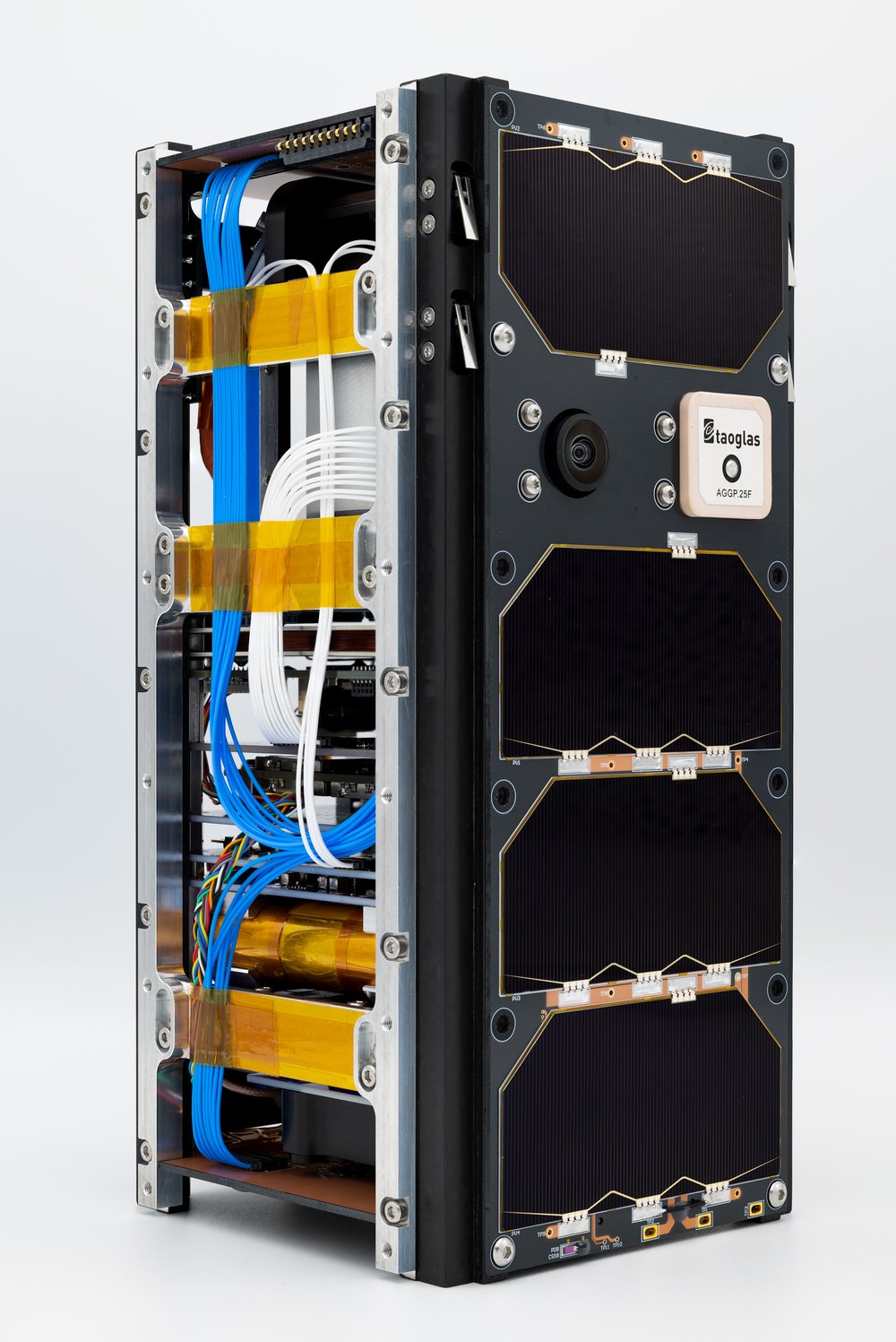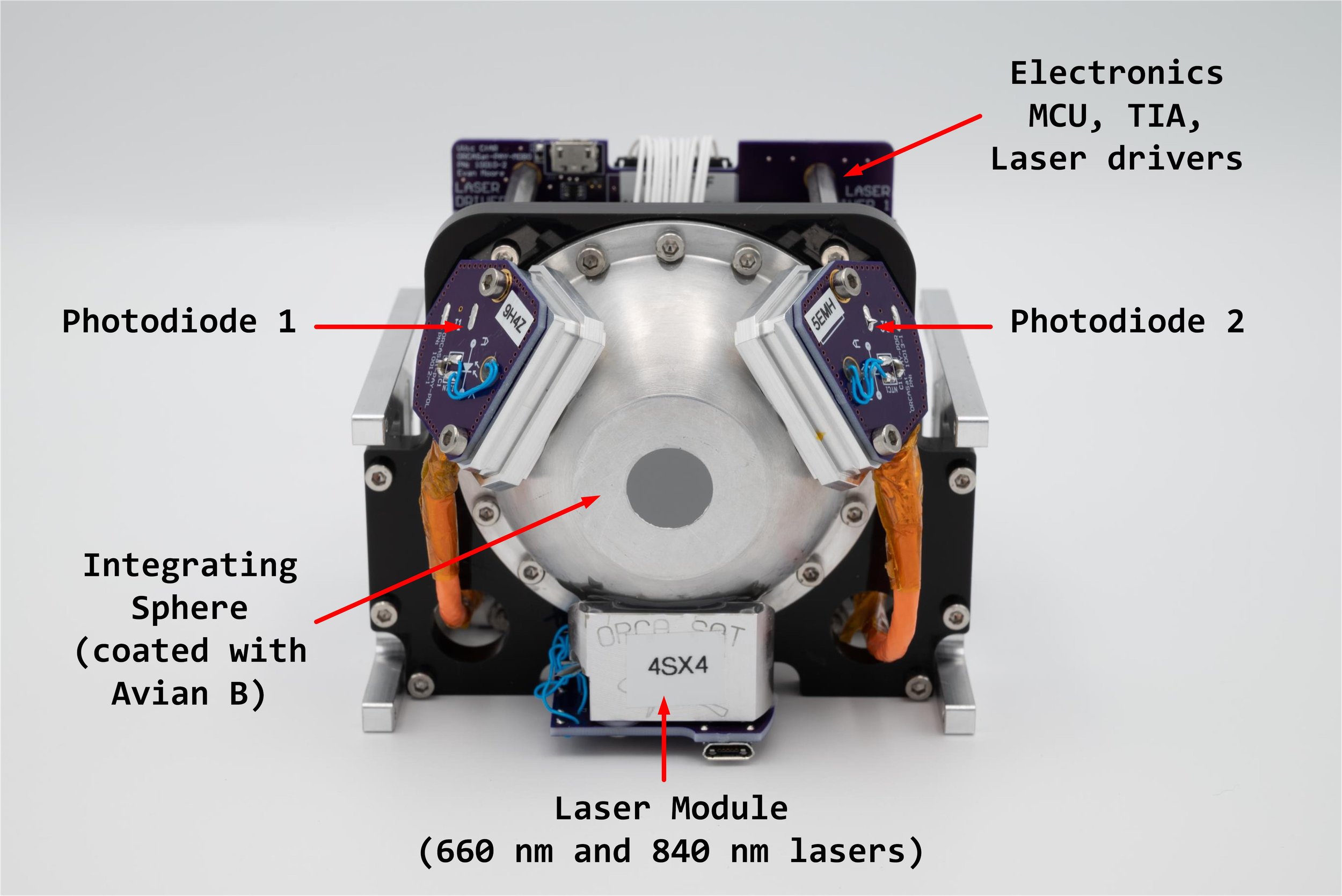ORCASat
Project Website: orcasat.ca
Project Videos: youtube.com/@orcasat
The Optical Reference Calibration Satellite

ORCASat was a 2U CubeSatellite designed and built by students at the University of Victoria's Centre for Aerospace Research (CfAR).
The satellite was launched aboard SpaceX CRS-26 on November 26th from Kennedy Space Center. It rendezvoused and docked with the International Space Station on November 27th. That mission delivered ORCASat as cargo to the ISS, where it was stowed aboard until it was deployed into low Earth orbit on December 29th, 2022.
ORCASat remained in orbit performing it's mission until atmospheric drag degraded it's orbit; and it completed atmospheric re-entry on July 7th, 2023 having spent 195 days in space and completing 2990 orbits of the Earth.
The purpose of the satellite was to serve as a reference light source of known luminosity above the majority of Earth's atmosphere. The idea is that ground-based telescopes can make an observation of the reference source provided by ORCASat before making an observation of an astronomical body of interest. The astronomers can then use the apparent brightness of ORCASat - observed at a known distance - to calibrate out the effect of attenuation due to the atmosphere.
To accomplish this, ORCASat was fitted with a custom payload featuring two lasers of precisely known wavelength, an apparatus for accurately measuring the luminosity of that source on the spacecraft, and an integrating sphere designed to ensure that the intensity of light would be the same from all viewing angles.

As ORCASat passed overhead a partner observatory it would activate the light source and begin taking measurements of the light source's luminosity and the spacecrafts present position. Then, during a later orbit this time-stamped telemetry would be transmitted to the ground station located on the top of UVic's Engineering Lab Wing.
The telemetry would later be sent to astronomers at the partner observatory, and they could work their magic - using our data to help them better interpret their results.
I played a small part in ORCASat’s design and construction. I worked on the project as an undergraduate volunteer part time in between my studies, and later as a co-op student from May - December, 2021. The project team was large and full of many talented people. I worked on the Telemetry Tracking & Command (TT&C) subsystem under a very motivated graduate student, responsible for building the RF communications module that would serve as the only data link between the ground station and the spacecraft.
The code that we used to make this work is based on the OpenLST project developed at Planet Labs. The ORCASat codebase is proprietary and owned by CfAR, so I can't share the details.
Much of my time was spent testing and integrating the communications subsystem in a prototype satellite housed in a clean-room in the universities engineering lab wing, affectionately referred to as FlatSat. I spent a lot of time in that room, you can watch myself and others performing some of that testing in this video:
I learned a lot during my time working on this project; it was my first large-scale engineering project undertaken in earnest. I'm very glad not to have introduced a bug in the communications software which would have rendered the spacecraft unreachable. You can't exactly plug in a debugger once it's in orbit!
The project is documented in much detail on the website and youtube channel. If you're curious about anything in particular you can probably find it there.